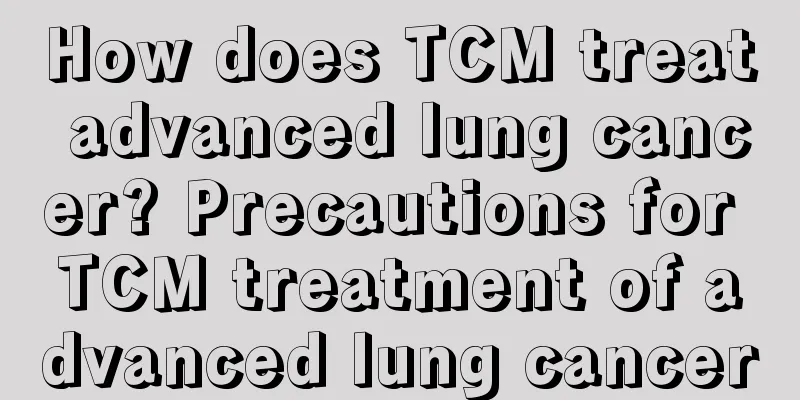What does bronchospasm mean

|
What does bronchospasm mean? Bronchospasm is a very common respiratory disease in normal times. It is usually caused by bronchitis, allergies, nerve stimulation, etc. However, when bronchospasm occurs, it must be treated in time. However, during treatment, the cause must be found out, and then symptomatic treatment should be given according to the cause. Only in this way can the symptoms of cough and asthma be effectively relieved. The following is a detailed introduction to what disease bronchospasm is. What does bronchospasm mean? Bronchospasm is a functional state of the bronchi caused by a variety of diseases and is not an independent disease. Bronchospasm is usually caused by upper respiratory tract infection or its repeated infection, which leads to tracheal (bronchial) mucosal lesions, making it sensitive to external stimuli and causing cough and asthma. In addition, certain allergens and nerve irritants may cause bronchospasm. Find the primary disease that causes bronchospasm, treat it according to the cause, relieve bronchospasm symptomatically, and alleviate cough and asthma symptoms. Causes and common diseases Upper respiratory tract infection or its repeated infection leads to tracheal (bronchial) mucosal lesions, which makes the patient sensitive to external stimuli and causes cough and asthma. In addition, smoking, certain allergens, and nerve stimulation may cause bronchospasm. Common diseases: 1. Chronic bronchitis in the elderly Wheezing, hypercapnia, dyspnea, coarse breath sounds, low breath sounds, rales, etc. 2. Ammonia poisoning Nausea and vomiting, cyanosis, fatigue, laryngeal edema, dyspnea, etc. 3. Hay fever Nasal congestion, nasal congestion and reflex headache, runny nose, itchy skin, bronchospasm, etc. 4. Nitrogen dioxide poisoning Nausea, miliary shadows in both lungs, blood in sputum, wheezing, bronchospasm, etc. 5. Small Intestinal Carcinoid Valve thickening, cyanosis, fatigue, abdominal pain, diarrhea, dyspnea, etc. 6. Acute attack of bronchial asthma Cough, chest tightness, wheezing, and difficulty breathing. Differential Diagnosis 1. Influenza The onset is acute, with an epidemiological history. In addition to respiratory symptoms, systemic symptoms such as fever and headache are obvious, and virus isolation and positive complement fixation tests can be used for identification. 2. Upper respiratory tract infection Symptoms such as nasal congestion, runny nose, and sore throat are obvious, but there is no cough or sputum, and no abnormal signs in the lungs. 3. Bronchial asthma Patients with acute bronchitis accompanied by bronchospasm may experience wheezing and wheezing, which should be differentiated from bronchial asthma, the latter of which has symptoms and signs such as paroxysmal dyspnea, labored expiratory breathing, wheezing, full lung wheezing, and orthopnea. Treatment principles Find the primary disease that causes bronchospasm, treat it according to the cause, relieve bronchospasm symptomatically, and give muscle relaxants to reduce the increase in respiratory impedance caused by choking and coughing. The use of drugs such as β2 agonists is relatively safe. Inhaled administration has the same effect as parenteral administration, with fewer side effects. Hormones can relieve bronchospasm. |
<<: What are the feeding guidelines for three-month-old babies?
>>: How to treat constipation caused by insufficient qi and blood
Recommend
Symptoms of too much turbid air in the body
In life, I believe many people have experienced g...
What are the routine examinations for hamartoma
What are the routine examinations for hamartoma? ...
What to do if meat is stuck between teeth
If meat is stuck between teeth, you should pay at...
What are the early symptoms of bladder cancer?
Bladder cancer is a tumor of the urinary system. ...
These examination items are needed for laryngeal cancer
Disease examination items are often overlooked by...
What causes dry cough with phlegm
I believe that the phenomenon of dry cough with p...
Symptoms of deficiency of both qi and blood, yin and yang
Deficiency of both Qi and blood, Yin and Yang ref...
How to make hair darker without dyeing? These 4 tricks are simple but the effect is magical
How to make your hair darker quickly? Dyeing your...
Side effects of fruit acid acne treatment
Many people often get pimples on their faces, whi...
Psychological counseling for patients with rectal cancer
Rectal cancer is a common malignant tumor of the ...
What to do if eye cream allergy causes redness and swelling
The skin around the eyes is very sensitive and is...
What kind of plants are good to put in a new house
New houses often have paint smell that has not ye...
Why do I have a headache, nausea and vomiting due to not sleeping well?
Why do I have a headache, nausea and vomiting bec...
What should I do if I have a headache after a cerebral hemorrhage?
Cerebral hemorrhage is a common intracranial blee...
How can I cure fibroids?
With the improvement of living standards, people&...









